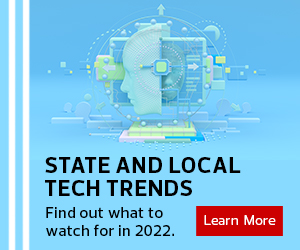Most recently, Ohio DAS teamed with the Ohio Department of Job and Family Services to integrate OH|ID into the state’s unemployment insurance system, Gallucci says. The integration went live in November, and it took an all-hands-on-deck collaborative approach to accomplish it.
“We’ve implemented quite a few cutting-edge technologies with unemployment insurance specifically,” Gallucci says. “You now have to go through an identity proofing process. You go through multifactor authentication. There's adaptive access that happens behind the scenes. If you're coming from a known malicious IP, you just get blocked, and some other things happen in the background. There are a lot of things we are doing that are unusual for a government agency. They are more like things a bank would do.”
Adamik adds, “The other interesting thing about the way we implemented unemployment insurance is, depending on how you deal with that identity proofing, you actually see a different user experience. Just because you fail or did poorly on the identity quiz doesn't mean that you automatically get kicked out of the system. The agency decided early in the process that we still want you to be able to put in this unemployment claim. How do we address that? Basically, we take different actions depending on a minimum level of assurance.”
This allows the unemployment manual adjudication process to continue to work in rhythm with an enterprise identify proofing system.
Click here for additional insights from CDW on identity and access management.
Successful Agencies Prioritize Change Management Over Technology
Although Innovate Ohio has strong vendor partners with Deloitte Consulting, Amazon Web Services and IBM, the initiative is not about dropping technological solutions into the system to resolve challenges, Gallucci emphasizes.
“What we did differently is we focused on and invested in the user experience, the journey, how people are interacting with the state. Then we focused on change management and used that as a primary anchor to implement our technical solutions. Because at the end of the day, change is hard,” Gallucci says.
Alan Shark, executive director of the Public Technology Institute, agrees that an emphasis on change management over specific technology products pays dividends for a state IAM implementation.
“It’s an issue of finding the resources to do it and finding the ability for management to actually fund it, because some people continue with the idea of, if it works, don't fix it; if it’s doing its job, there are other priorities,” Shark says. “That’s unfortunate. This is where officials have to make a better argument for the benefits of change and why this integration is good for the public.”
He adds, “There’s greater emphasis today on IAM than ever before because now we’re asking the public to do more online business with government at all levels. Making it easier so that you don’t need separate identities is a no brainer.”
Ohio strives to “reduce barriers to entry through change management,” Gallucci says. The state studied how people interact with applications and mapped their user journeys. It then pursued strong change management and communication to ensure the success of implementing a single sign-on application.
“Those are the things that need to be accomplished in order to innovate, not the underlying technical solution,” Gallucci says. “You need it. You need some technical visionary minds to understand what to do and how to do it, but implementation and delivery are the key points.”













